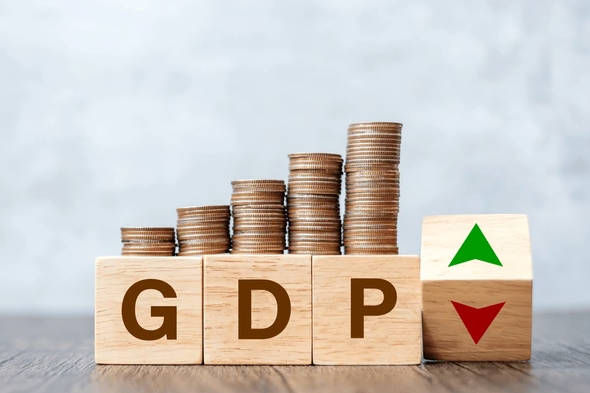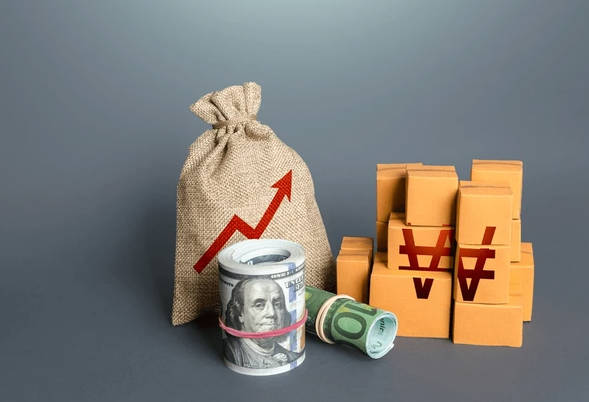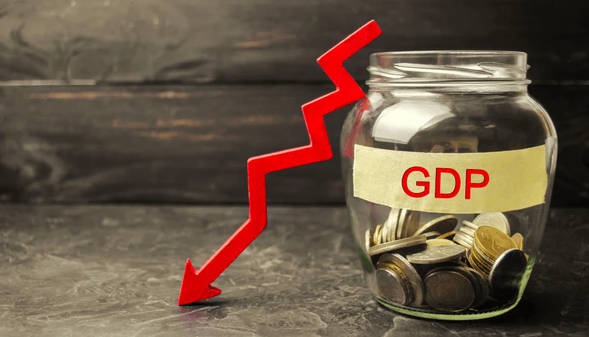
Ultima Markets App
Trade Anytime, Anywhere
Important Information
This website is managed by Ultima Markets’ international entities, and it’s important to emphasise that they are not subject to regulation by the FCA in the UK. Therefore, you must understand that you will not have the FCA’s protection when investing through this website – for example:
- You will not be guaranteed Negative Balance Protection
- You will not be protected by FCA’s leverage restrictions
- You will not have the right to settle disputes via the Financial Ombudsman Service (FOS)
- You will not be protected by Financial Services Compensation Scheme (FSCS)
- Any monies deposited will not be afforded the protection required under the FCA Client Assets Sourcebook. The level of protection for your funds will be determined by the regulations of the relevant local regulator.
Note: Ultima Markets is currently developing a dedicated website for UK clients and expects to onboard UK clients under FCA regulations in 2026.
If you would like to proceed and visit this website, you acknowledge and confirm the following:
- 1.The website is owned by Ultima Markets’ international entities and not by Ultima Markets UK Ltd, which is regulated by the FCA.
- 2.Ultima Markets Limited, or any of the Ultima Markets international entities, are neither based in the UK nor licensed by the FCA.
- 3.You are accessing the website at your own initiative and have not been solicited by Ultima Markets Limited in any way.
- 4.Investing through this website does not grant you the protections provided by the FCA.
- 5.Should you choose to invest through this website or with any of the international Ultima Markets entities, you will be subject to the rules and regulations of the relevant international regulatory authorities, not the FCA.
Ultima Markets wants to make it clear that we are duly licensed and authorised to offer the services and financial derivative products listed on our website. Individuals accessing this website and registering a trading account do so entirely of their own volition and without prior solicitation.
By confirming your decision to proceed with entering the website, you hereby affirm that this decision was solely initiated by you, and no solicitation has been made by any Ultima Markets entity.
I confirm my intention to proceed and enter this website Please direct me to the website operated by Ultima Markets , regulated by the FCA in the United KingdomGlobal Upstream Exchange Technical Disruption – Impact on Selected Products
Dear Valued Client,
Due to abnormal liquidity conditions in gold caused by this disruption, we have temporarily suspended trading for all gold instruments with immediate effect.
We are writing to keep you fully informed that a technical disruption currently affecting upstream global exchange, which has resulted in interruptions to pricing and trading for several international derivatives markets.
Please be advised that this is an industry-wide incident originating from an external provider and is unrelated to our platform or price movements.During this time, clients may experience price delays, order rejections, or temporary constraints on order execution.
We understand that seamless execution is vital to your trading. We have activated our emergency monitoring protocols and are tracking the recovery progress in real-time. We will send a follow-up notification immediately once services are fully operational.
We sincerely apologize for the inconvenience caused by this external event, and our support team remains on standby to assist you should you require any assistance.
Thank you for your understanding.
Close Pop-upA Guide on How to Calculate Real GDPI
If you want a clear read on real economic growth, you need to understand how to calculate real GDP. Real GDP removes the impact of inflation so changes reflect actual quantities produced rather than price moves. In this blog guide, we’ll start with what real GDP means, move into the real GDP formula, and then walk through examples and common mistakes. By the end, you’ll know exactly how to calculate real GDP and explain it with confidence.

What Is Real GDP and Why It Matters
Let’s begin with the idea behind the numbers. Real GDP is the value of final goods and services measured at constant prices. That means you’re tracking quantity changes, not price changes.
To make the contrast clear before we calculate anything:
- Nominal GDP uses current prices and can rise even if output is flat.
- Real GDP uses base year prices so growth reflects changes in quantity.
Knowing how to calculate real GDP lets you measure real growth, not just higher prices
The Real GDP Formula
Here is the core formula used by analysts and statistical agencies:

Real GDP = Nominal GDP ÷ Price Index × 100
- The Price Index is usually the GDP deflator (index with base year = 100).
- If you only have the deflator as a ratio (e.g., 1.10), then:
Real GDP = Nominal GDP ÷ Deflator Ratio
Why this works: dividing by a broad price index removes inflation, so the result reflects true changes in quantity.
Methods To Calculate Real GDP
1) Using the GDP Deflator
This is the preferred and most accurate method because the GDP deflator covers prices across the whole economy.
Step by step
- Collect nominal GDP for the period.
- Find the GDP deflator for the same period and note the base year.
- Apply the real GDP formula.
- Repeat for multiple periods to build a real GDP series and then compute growth rates.
Now, let’s build on that with a two year illustration.
- Year 1: Nominal 1,800, Deflator 100 → Real 1,800
- Year 2: Nominal 2,070, Deflator 115 → Real 2,070 ÷ 115 × 100 = 1,800
What does this tell us? Nominal GDP increased, but real GDP stayed flat. The change came from higher prices, not higher output.
2) Using CPI as a Proxy
Sometimes the GDP deflator isn’t available. In that case, how to calculate real GDP can be approximated using CPI.
Approximate Real GDP = Nominal GDP ÷ CPI × 100
However, here’s the catch. CPI focuses on consumer prices. It doesn’t fully reflect investment goods, government services, or exports. Because of that, CPI based results may differ from official real GDP, especially when investment prices move differently from consumer prices.
3) Chain-Weighted (Chain Volume) Approach
You might see real GDP reported as “billions of chained [year] dollars.” That wording comes from chain weighted methods, often the Fisher chain index. Rather than locking weights to one base year forever, chain weighting updates them each year so the measure keeps up with changes in what households, firms, and governments buy.
In plain language, here’s how it works:
- Measure growth between adjacent years using current spending weights.
- Take the Fisher growth rate for that pair of years.
- Link the year to year growth rates into a single chain.
- Scale the index to a reference year and publish levels in chained dollars or chain volume.
Think of it as a smarter ruler. The economy evolves, and the ruler adapts so your measure of how to calculate real GDP stays realistic over time.
Examples To Show How To Calculate Real GDP
To keep things practical, let’s run two quick scenarios.
Example A Using An Index
- Nominal GDP = 950 billion
- GDP deflator index = 125
- Real GDP = 950 ÷ 125 × 100 = 760 billion
Takeaway: Prices were higher than in the base year, so real output is smaller than nominal once adjusted.
Example B Using A Ratio
- Nominal GDP = 1,000,000
- Deflator ratio = 1.01
- Real GDP = 1,000,000 ÷ 1.01 = 990,099
Takeaway: The ratio version is the same logic. You’re simply dividing by the inflation factor directly.
With the math well grounded, the last step is avoiding the easy errors.
Where To Find Data To Calculate Real GDP

- National statistical office or BEA-style NIPA tables: nominal GDP, real GDP (chained dollars), and the GDP price index/deflator.
- World Bank / OECD: international current-price, constant-price, and GDP deflator series for many countries.
You can directly use official real GDP series or apply the real GDP formula yourself if you only have nominal GDP and a deflator.
Common Mistakes You Might Encounter
- Mixing periods: Use a price index from the same year/quarter as nominal GDP.
- Dividing by inflation %, not the index: Always divide by the index (or ratio), then ×100 if using index form.
- Ignoring rebasing: When the reference year changes, levels shift but the growth path does not.
- Comparing countries blindly: Methods, base years, and seasonal adjustments differ—check metadata.
- Using CPI instead of the deflator without warning: CPI is narrower; note any proxy use.
FAQs
What is the fastest way to calculate real GDP?
Use the real GDP formula with the GDP deflator: Real = Nominal ÷ (Deflator/100).
Why does nominal GDP rise while real GDP is flat?
Because prices increased while quantities didn’t. Your real GDP strips those price effects out.
Is CPI good enough to calculate real GDP?
Only as a proxy. For accurate how to calculate real GDP work, prefer the GDP deflator.
What does “chained 2017 dollars” mean?
The real GDP series is scaled to a 2017 reference year using a chain index that updates weights annually.
Conclusion
To calculate real GDP, start with nominal GDP, convert with a broad price index such as the GDP deflator, and multiply by 100 if the index uses a base year equal to 100. Then repeat across periods to build a real series and compute growth. Prefer chain weighted figures for long run accuracy and always document your index, base year, and data source. That’s the practical, no-nonsense way to master how to calculate real GDP.
Disclaimer: This content is provided for informational purposes only and does not constitute, and should not be construed as, financial, investment, or other professional advice. No statement or opinion contained here in should be considered a recommendation by Ultima Markets or the author regarding any specific investment product, strategy, or transaction. Readers are advised not to rely solely on this material when making investment decisions and should seek independent advice where appropriate.












